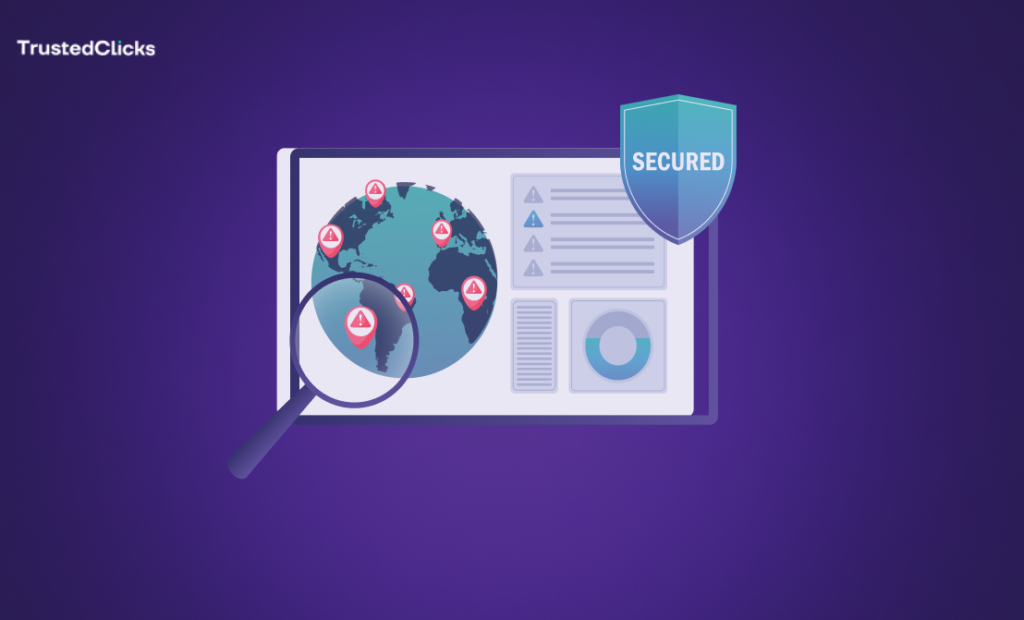- Website security
The Role of AI in IP Fraud Detection: How Machine Learning is Fighting Cybercrime


Businesses and individuals alike are increasingly vulnerable to fraud and cybercrime. One of the key areas of concern is IP fraud detection, which involves identifying and mitigating fraudulent activities related to intellectual property (IP) theft, identity fraud, and cyber-attacks. As traditional security measures struggle to keep up with sophisticated cybercriminals, artificial intelligence (AI) and machine learning (ML) have emerged as powerful tools to combat fraudulent activities. AI-driven solutions are revolutionizing how fraud is detected and prevented, enabling real-time responses and significantly reducing financial losses.
IP Fraud and Its Implications
Intellectual property fraud refers to the unauthorized use, duplication, or manipulation of proprietary information. This can take multiple forms, including:
Trademark and copyright infringement – Unauthorized use of logos, brand names, or creative content.
Patent fraud – Filing false patents or using patented technology without permission.
Identity theft and digital fraud – Impersonating individuals or businesses to gain access to confidential information.
Counterfeiting and piracy – Manufacturing and selling fake products under a legitimate brand name.
Phishing and cyber espionage – Deceptive tactics used to obtain sensitive data for malicious purposes.
The consequences of IP fraud can be severe, leading to financial losses, reputational damage, and legal complications. Traditional fraud detection methods rely on rule-based systems, which are often rigid and ineffective against evolving cyber threats. AI-driven approaches, on the other hand, provide dynamic and intelligent solutions for detecting and preventing IP fraud in real time.
The Role of AI and Machine Learning in IP Fraud Detection
AI and machine learning have transformed the landscape of fraud detection by offering predictive and adaptive models that analyze vast amounts of data and identify anomalies with remarkable accuracy. Here’s how AI is making a difference.
Real-Time Anomaly Detection
Machine learning models use historical data to establish patterns of legitimate behavior. Any deviation from these patterns is flagged as a potential fraudulent activity. AI-driven anomaly detection systems continuously learn and adapt to new threats, ensuring a proactive approach to IP fraud detection.
For example, an AI system monitoring website traffic can detect unusual spikes in access attempts from unknown sources, indicating potential hacking attempts. Similarly, AI-driven fraud detection tools can identify unauthorized access to intellectual property databases, alerting companies to possible data breaches
Predictive Analytics for Fraud Prevention
Predictive analytics leverages AI to assess risks and predict fraudulent behavior before it occurs. By analyzing historical fraud cases, machine learning algorithms can identify red flags and assign risk scores to transactions or activities. This allows businesses to take preventive measures and minimize the impact of fraudulent activities.
For instance, an e-commerce company can use AI to detect counterfeit product listings by analyzing seller behavior, product images, and pricing patterns. By flagging suspicious listings in advance, AI helps protect brand integrity and consumer trust.
Natural Language Processing (NLP) for Brand Protection
Natural Language Processing (NLP) enables AI systems to analyze and interpret text-based data across digital platforms. This is particularly useful for detecting brand infringements, fake advertisements, and phishing attempts.
AI-powered NLP tools can scan social media, e-commerce platforms, and forums to identify unauthorized use of brand names or fraudulent schemes impersonating legitimate businesses. Companies can take swift legal action against infringers and prevent revenue losses caused by counterfeit products.
Image and Video Recognition for Counterfeit Detection
AI-powered image and video recognition technologies can detect counterfeit goods by analyzing product images, logos, and packaging. Advanced algorithms compare these images with legitimate versions to identify discrepancies that indicate fraudulent products.
For example, fashion brands and luxury goods manufacturers use AI-based image recognition tools to scan online marketplaces and detect unauthorized replicas of their products. This helps companies safeguard their intellectual property and maintain product authenticity.
Deep Learning for Cybersecurity
Deep learning models play a crucial role in cybersecurity by detecting malicious activities in networks and systems. These models can identify phishing attacks, malware, and unauthorized access attempts by analyzing user behavior and network traffic.
For instance, AI-powered cybersecurity solutions can detect unusual login patterns, such as repeated access attempts from different locations, indicating potential credential theft. By proactively blocking suspicious activities, AI strengthens defenses against cybercriminals.
AI-Powered Fraud Detection Tools and Technologies
Several AI-powered tools and technologies are used for IP fraud detection, including:
Machine Learning Algorithms – Used for pattern recognition, predictive analytics, and anomaly detection.
Blockchain Technology – Ensures transparency and security in IP rights management and authentication.
Biometric Authentication – Facial recognition, voice authentication, and fingerprint scanning to prevent identity fraud.
AI Chatbots and Automated Monitoring – Assist in identifying fraudulent claims and monitoring digital platforms for IP violations.
Challenges and Limitations of AI in IP Fraud Detection
Despite its advancements, AI in fraud detection faces several challenges:
Data Quality and Availability – AI models require large datasets for training, and incomplete or biased data can impact accuracy.
Evolving Cyber Threats – Fraudsters continuously develop new techniques, requiring AI systems to adapt rapidly.
False Positives and Negatives – Overly aggressive fraud detection can flag legitimate activities, while inadequate detection may miss sophisticated fraud attempts.
Regulatory and Ethical Concerns – Ensuring AI-driven fraud detection aligns with privacy laws and ethical considerations is critical.
The Future of AI in IP Fraud Detection
The future of AI in IP fraud detection looks promising, with continuous advancements in machine learning, deep learning, and automation. Emerging trends include:
AI-Powered Blockchain for IP Protection – Combining AI with blockchain technology enhances security and traceability of intellectual property rights.
Federated Learning for Secure Data Sharing – AI models trained on decentralized data sources without compromising privacy.
Enhanced AI Explainability – Developing transparent AI models that provide clear insights into fraud detection decisions.
Automated Legal Enforcement – AI-driven legal frameworks that automatically issue takedown notices and initiate legal actions against fraudsters.
Frequently Asked Questions
What is an IP Fraud Score ?
An IP fraud score provides valuable insight into the reliability of an IP address, allowing you to identify potential risks and suspicious activities. This score, ranging from 0 to 1, enables you to quickly evaluate the likelihood of fraud and make informed decisions to safeguard your business or personal information. TrustedClicks’ IP fraud score tool is designed for seamless integration with your existing systems. Acknowledging the significance of user-friendly technology, we have ensured that our product is compatible with a wide range of platforms and configurations. The tool can be easily integrated into CRM systems, e-commerce platforms, or custom security solutions through APIs and other industry-standard protocols.
How can I reduce my IP fraud risk?
Fraudsters frequently employ proxy servers to conceal their actual IP addresses and locations. By analyzing IP data, it’s possible to identify the use of these proxies, which can signal malicious intent. To mitigate the risk of fraud, it’s essential to block requests from suspicious or recognized proxy servers, thereby preventing unauthorized access attempts. Additionally, implementing robust IP fraud detection tools can enhance your security measures, allowing for real-time monitoring and response to potential threats. Regularly updating your security protocols and educating your team about the signs of IP fraud will further strengthen your defenses against these risks.
Why is my IP fraud score so high?
An IP address is classified as High Risk based on several criteria, such as whether it originates from a TOR network exit node, is associated with an anonymous or elite proxy, has been blacklisted due to suspicious or spam-related activities, or is located in a country deemed to have a high risk for fraudulent behavior. Additionally, the history of the IP’s previous activities, including any reported incidents of abuse or compromise, can also influence its risk rating. Regularly monitoring and analyzing IP address behavior is essential for identifying potential threats and maintaining a secure online environment.
Final Words
As cybercriminals continue to evolve, traditional fraud detection methods are no longer sufficient to combat intellectual property fraud. AI and machine learning have emerged as game-changers in IP fraud detection, offering real-time monitoring, predictive analytics, and automated enforcement. While challenges remain, the integration of AI-driven solutions with cybersecurity frameworks will significantly enhance fraud prevention efforts.
Businesses and organizations must embrace AI-driven fraud detection strategies to safeguard their intellectual property, mitigate financial losses, and maintain consumer trust. The future of fraud prevention lies in leveraging AI’s capabilities to stay ahead of cyber threats and build a more secure digital landscape.
Table of Contents
Join our community!
Subscribe to our newsletter for the latest updates, exclusive content, and more. Don’t miss out—sign up today!
Recent Posts

The Role of AI in IP Fraud Detection: How Machine Learning is Fighting Cybercrime
- 7 mins read

The Hidden World of IP Reputation: What Your Address Says About You
- 6 mins read

The Role of IP Risk Scoring in Fraud Prevention and Cybersecurity
- 3 mins read



